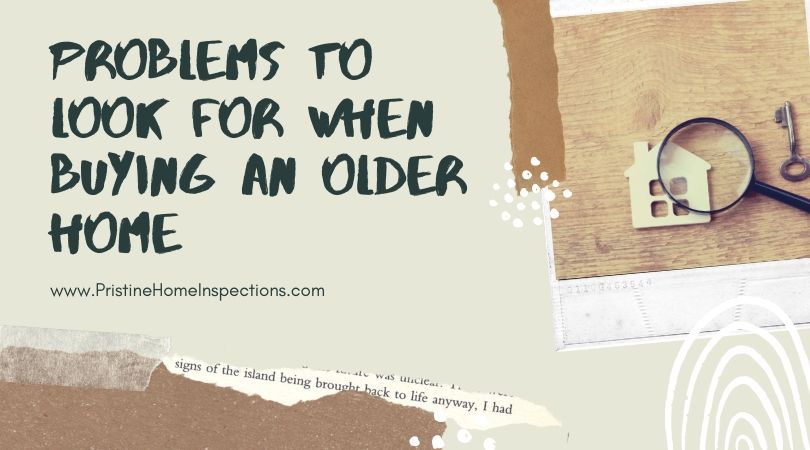Buying an older home can mean you are getting a house with cool architecture that is different or more interesting than a standard newer home, and it can also mean savings in price. While an older home may be less expensive, as it ages it may need a number of repairs if it has not been well cared for by the previous owner. Here are some things you will want to watch out for when purchasing an older home. 
-
Asbestos
Asbestos was commonly used in older buildings and homes built before 1979. It was discovered that asbestos fibers get into the air and then into the lining of the lungs and can cause cancer with prolonged exposure. Today the use of asbestos is banned, but there are still many older homes and buildings out there with asbestos in the walls.
If the older home you are buying was built at a time that it was still legal to build using asbestos, you will want to ensure the home is asbestos-free. This can be done with proof in a documented form that the home has been previously abated. If there is no documented proof a special inspection should be conducted.
-
Lead Paint
Lead containing paint was widely used in homes built before 1978. Lead is dangerous to human health and it is required by law that owners disclose the presence of lead paint in a home. If the home will be inhabited by anyone under the age of 6 it is required that the lead be removed.
-
Foundation and Sills
The entire home rests/sits on the sill plate and foundation. The older a home is the more common foundation and sill plate issues are. A reputable and experienced home inspector will know to check these areas of your home very carefully and thoroughly, especially if you are looking to purchase a historic home.
Schedule an Inspection
-
Electrical
Older home electrical systems required much less than they do today. Older homes were not built to carry the load of powering multiple televisions, computers, wifi, several appliances, and fancy HVAC systems. If you plan on having a lot of modern conveniences in the home, you will want to make sure the home can carry the load, especially if it was built around 1950 or earlier, as the home may have old knob and tube wiring. Knob and tube wiring is not made to carry the load of new technology and can even spark a fire in the walls. If the home has updated electrical you want to make sure it was done correctly with the removal of the knob and tube, not a patch into the knob and tube system.
If there are ungrounded outlets in the home this is a cause for concern as well. Look at the outlets in the home, if they only have two holes and not three they are not grounded and you should not use anything with them that requires grounding like a computer or flat screen tv for instance. These outlets will need to be upgraded.
-
Roofing
A roof is a very important and costly part of a home, and it is not uncommon to find older homes for sale with roofing issues. Many times home buyers are unaware the roof is in less than ideal condition until an inspector has a look at it. Sometimes homeowners will do a quick patch job on a very old roof instead of a total replacement that is needed.
-
Well Water
If you are buying a home on an old well water system it needs to be thoroughly inspected. There are many issues that can arise with older well systems like contaminates in the water. Do not skip out on having a well test to make sure the water is potable.
-
Energy Consumption
Some old homes still have the original windows and many of these tend to be single-pane windows. Some older homes also have little to no insulation. If you are purchasing a historic home it is a good idea to have an energy audit to find out the general energy consumption and what it would cost for upgrades.
If you are considering the purchase of an older home you will want to hire a home inspector with plenty of expertise and knowledge of older homes. For expert home inspections in Urbana and surrounding areas contact Pristine Inspections and Testing.
